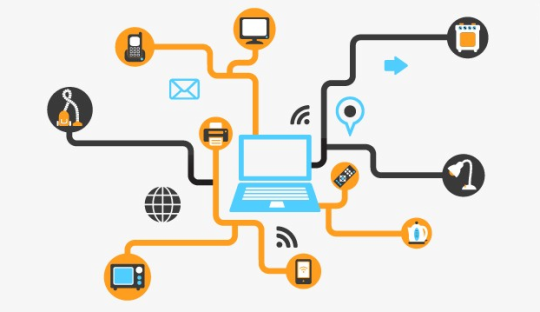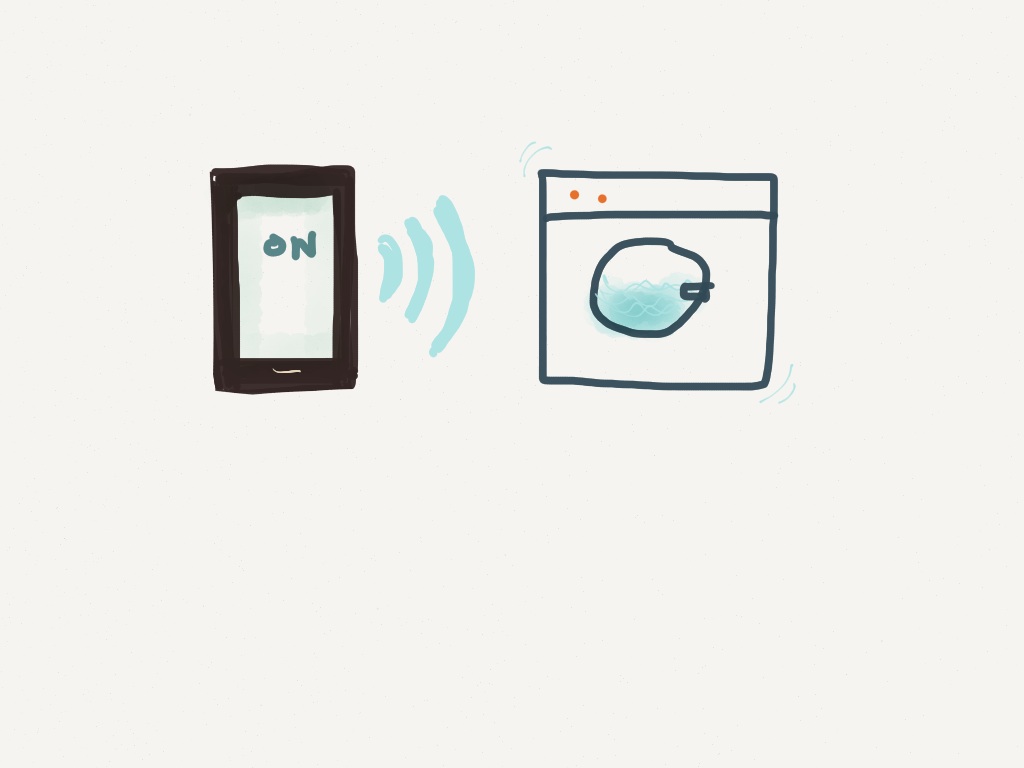The Internet of Things
 The Internet of Things (IoT) is a term that has been buzzing around for a couple of years now. I’d like to flesh out the concept and look at one or two of its current and potential applications here.
The Internet of Things (IoT) is a term that has been buzzing around for a couple of years now. I’d like to flesh out the concept and look at one or two of its current and potential applications here.
What is the Internet of Things?
The term was coined in 1999 by Kevin Ashton, executive director of the Auto ID Center. He was talking to Proctor and Gamble about the benefits of connecting their Radio Frequency Identification (RFID) supply chain technology to the internet.
Ashton’s point was about the potential value of the information once it resides in a networked sphere, such as the internet, rather than remaining isolated in a single company’s computers:
“If we had computers that knew everything there was to know about things – using data they gathered without any help from us – we would be able to track and count everything, and greatly reduce waste, loss, and cost. We would know when things needed replacing, repairing or recalling, and whether they were fresh or past their best.”

Image © Silicon Angle
Three important elements create the necessary environment for an Internet of Things:
- Sensors – We take in the world through our senses, and we act on the information we receive. When we add RFID devices, or other tracking or sensing devices, we are laying out a nervous system over the world, like the one we have in our bodies. Now, every sensor can record information about the environment of the system or location in which is it placed.
- Connections – Connectivity gives the data somewhere to go once it has been collected by the sensors. The inputs are digitised and placed onto networks where other devices with sensors, and people, can access the data they contain.
- People and processes – The networked inputs are combined with people, processes, and data in the creation of systems. With all these factors in play, the information upon which decisions are based is much, much more detailed than ever before. Decisions that are better informed answer more directly to the demands of a situation.
The potential for waste reduction alone is enormous, as are the consequences.
Okay…So we have an idea of objects that are connected to each other and to a wider network, collecting and sharing data, that can influence decision-making and take action automatically.
At the moment, when you think of networked devices, you probably conjure up smartphones, computers, maybe a thermostat or light switch.

The Internet of Things takes the connected device to a whole new level. What if your fridge knew the sell-by dates of all your food, and could post to your smartphone’s shopping list when the milk expired?
We’re not just talking about the idea of controlling our coffee machines and jacuzzis via wireless connections, though those applications are being explored. The greatest potential lies in data that is collected, shared, and acted upon by devices, through connections to other machines.
Show me!
Application: Body
The Dash (http://www.bragi.com)
The Dash is a great example of the connected body idea from a consumer perspective. It records various metrics during workouts, takes phone calls, and plays music, all without wires. The device’s data can be accessed through a smart-phone app, and the music can be uploaded with computer software.
https://youtube.com/watch?v=yIOFcqKEz0k
In its current form, this product is an element in a less extensive, more personal Internet of Things. However, the manufacturers made a developer edition available from the outset – a testament to the open nature of development in this sphere. Dash’s further applications can be explored and engineered by developers with first-hand user experiences.
Application: Health
Biovigil (http://www.biovigilsystems.com/products)
https://youtube.com/watch?v=UtPmqc4syMU
Many systems have been developed to help healthcare professionals maintain proper hand hygiene in the battle against hospital-acquired infection. This is just one, from a US-based company. With such a system in place, illness could be reduced, and savings made, anywhere in the world.
Application: Environment
Pavegen (http://www.pavegen.com)
Pavegen came out of a brief to make street lighting more energy efficient. The result is an off-grid solution that is powered by footsteps, and records data that can be accessed locally.
Generating power from human activity is a beautiful idea in its simplicity, but not always an easy thing to execute. Pavegen is part of the Johnnie Walker Keep Walking Project.
Application: Business
TILT (http://www.beveragemetrics.com)
Wastage is a huge problem in the hospitality industry: the estimates for percentage of revenue lost on over-pouring are significant. The Total Inventory Liquor Tracking system (TILT) collects data through sensors on bottles and taps, and at point of sale. It is designed to track pouring, improve the inventory process and reduce labour costs in stocktaking.
Application: Social Marketing
Fliike (http://www.smiirl.com)
Fliike is a fun little social marketing device from Smiirl, aimed at businesses with bricks-and-mortar premises. It’s a physical representation of the Facebook ‘Likes’ that a page receives.
The number of Likes is updated in real-time on a simple flip-clock style display. They are designed to sit in shop windows, and other prominent locations, to be noticed by customers. Internet of Things feels immediate and tangible when we an tap ‘Like’ on a smart-phone screen, and observe a very simple mechanical change in plastic and wood that reflects a digital one, whose mechanism is realised in software and internet code.
So what’s next?
It seems – to run headlong into a cliché – that the possibilities are endless.
If you’d like to find out more about the Internet of Things, I found this infographic from postscapes.com most helpful.
You can also follow it on Twitter.
Top Image © dadallone
Written by Chloe Marshall
About markmaking*
markmaking*
mark-making* is an award-winning creative agency specialising in branding, campaigns and communications